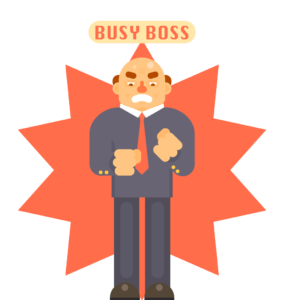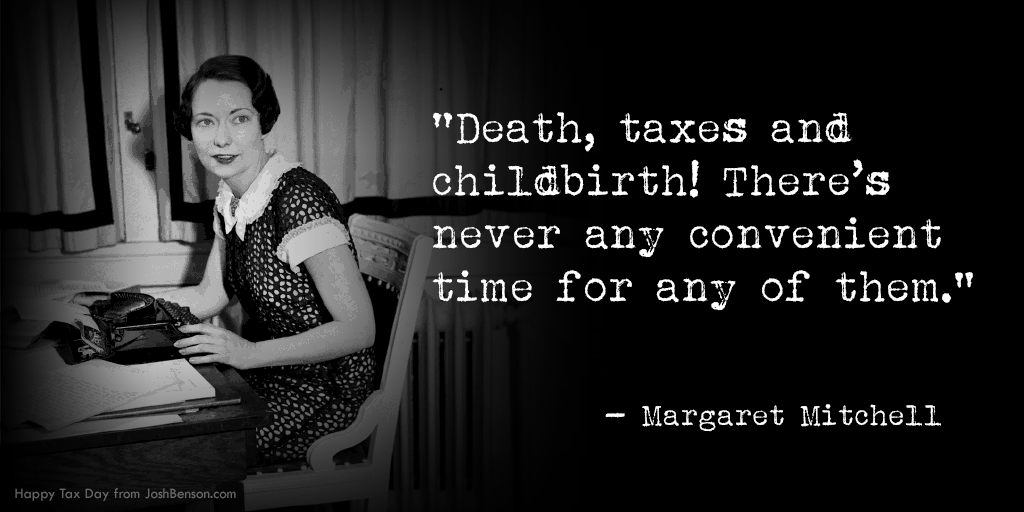Disclosure: Some of the links below are affiliate links, meaning, at no additional cost to you, Storehacks may earn a commission if you click a link to an external source.
There are several things that must be done when drop shipping. Forgetting tasks can have untold consequences.
Lodging tax forms after due dates (a big no-no), not getting back to designers in a decent amount of time or even missing an appointment that has been set for weeks can have devastating effects on your business.
From experience getting bogged down on the day to day tasks, leaves many jobs far from complete or completely forgotten.
Below is a list of items that can be easily forgotten and thankfully easily fixed.
Dropshipping: 11 Terrible Things You Shouldn't Forget
Delegation
Getting bogged down in a lot of work is incredibly easy particularly if you are a one-man army.
Some days fly past, you fail to get up from your seat, get a splitting headache because you didn't have your morning cuppa (that's long past, it's now 2 pm), hold a rather full bladder far to long and before you know it it's 10 pm and you can barely open your eyes…
didn't have your morning cuppa (that's long past, it's now 2 pm), hold a rather full bladder far to long and before you know it it's 10 pm and you can barely open your eyes…
The art of delegation needs to be learned and learned fast. The quicker you're able to spot repetitive tasks that you can systemize will be the time that you get back to focus on the areas that matter.
Not to mention the time that would allow you to get that coffee and relieve yourself…clearly not at the desk.
According to Professor Nelson, CEO's need to stay in control of the overall vision, strategy and be able to communicate this to their team. If a boss is too focused on the everyday tasks to run the business it becomes almost impossible to communicate in anything more than grunts and caveman gesturing.
“Unfortunately, too many leaders see delegation as losing control, when it’s really about gaining the time to take control of the really important activities,” he says.
To be effective in delegating you to need to sit down and write a list of the jobs you do every day. Ask yourself, are there tasks that you should be paying others to do?
In Print on Demand or dropshipping these could be;
- Uploading new products to Shopify or your other preferred eCommerce platform,
- Creating the posts in Facebook for ad launches,
- Communicating with customers,
- Doing your bookkeeping,
- Doing your own designs or product finding,
- Creating the description copy,
These are only a few to give you an idea. Spend 30 minutes writing out what could be outsourced and you will soon have more time to focus on actually growing your business than running it.
Tax
You've heard it before the only things certain in life are death and taxes. If you're lucky enough to live in a low tax system you may not need to read this section. If like the rest of us you are required to pay your fair share of tax then this is for you.
As a store owner, the best feeling you can get is when you are scaling hard and the money is flowing into your account. In Australia, we aim to just take 30% off the gross profit immediately when calculating our numbers for the day to allow for Tax.
Forgetting to collect or put your tax money in a separate account for easy tracking could result in not having available cash when tax time rolls around.
Unfortunately due to the nature of the retail business is not always consistent and you will need to build a moat around your business to account for those lean times…which always happens to be around… tax time.

What this means is when you are banking good profits, only take what you need. Do not overspend on getting art or jet skis or excessive bottles of wine. In past, I've done that…and tax time sucked.
So, when getting started in Shopify be sure to set up your Tax section correctly. Have a bookkeeper keep the books in good working order, collect and put your tax in a separate account. Your future self will thank you for it. A good bookkeeper is worth their weight in gold.
I absolutely hate anything to do with this part of the job and having someone that knows what they're doing saves a massive hassle. Recently I have wasted a lot of my own time trying to help the bookkeeper do her job, this is not what you want to be doing.
If you want a little more info on declaring of deductions to take a look at this article on Entrepreneur.com.
Check your Ads
With the introduction of Facebook ad rules, the days of overspending are gone. Many times over the past few years a day or two would go by and we'd forget that we'd scaled an ad or missed the turnoff for a new launch.
This might be inexcusable for some people, however, once you start adhering to your launch rules and have 30+ designs going up a week it will become quite easy to overlook. It becomes impossible to be making the cuts and scaling the campaigns that meet your rules with the sheer quantity that are running.
Setting up certain cutting rules is necessary to ensure only the best ads continue to run and if you're willing, you can set up rules to automate your scaling.
The last thing you want to be doing when running ads is going deeper into a hole on an ad that is not selling or missing a scaling opportunity.
Despite the fact you shouldn't be spending unnecessary time finding the campaigns that meet your rules the effort required to action each becomes very tiresome, very quickly.
Set up your automated rules.
Adespresso recently wrote an article explaining how to set up automated rules on Facebook, but first what are automated rules? Facebook explains below;
“With automated rules, you can create rules in Ads Manager and Power Editor that automatically update or notify you of changes to your campaigns, ad sets or ads. Automated rules put more control in your hands. Rather than checking the performance of your campaigns, ad sets or ads daily, automated rules can run these checks for you and take the actions you’d normally do manually.”

Do your Retargeting.
It's all well and good to throw cash at your top of funnel traffic however equal importance needs to be placed on getting those folks back to convert. It's much easier to speak to someone who you've got a relationship with. Much easier than walking up to a good-looking stranger and handing them a brand new necklace telling them that'll cost $50 to keep.
When you think about how $260 billion is recoverable through checkout optimizations it should be a no-brainer why you should set up retargeting to win back your customers. Just note, that's not $260 billion for your store alone…although that would be more than welcome I'm sure.
If you have no idea where to start with a retargeting funnel then check out our recent Facebook DPA retargeting guide.
Here are some reasons why people abandon their shopping carts online…
- Cat walked on the keyboard… spilled their coffee everywhere,
- Their credit card is not in a convenient location…as in, not beside them,
- The credit card was declined,
- Website didn't load quick enough,
- Couldn't calculate the full cost of the order (Unacceptable),
- Unexpected fees and charges…think shipping costs,
- Just browsing
- Was only conducting research to buy later.
These are all items that can be fixed and show the user was interested in your product. How many times does it take for someone to purchase from your business? Well, that depends on a number of things from price, needs vs wants, the complexity of checkout and a number of other things.
Email Flows
When it comes to Return on Investment your email list is the asset that will reward those who look after their customers. For a beginner's guide to email marketing check out Quick Sprout's article.
A recent study by the Direct Marketing Association found that;
- Email ROI is a massive 3,800%.
- 72% would rather receive an email than see advertising on social media.
- 38% of consumers note receiving special offers as the main reason they subscribe to an email list.
If that isn't enough to get you seriously considering investing in an email marketing solution, maybe this will help;
- Twitter & Facebook are left in the dust when compared to email. A McKinsey & Company study found that email marketing is 40x more effective than advertising on the platforms when generating sales.Think of emails this way, you're penetrating their personal space… (keep it G rated) and while you may post an update on one of the socials, by the time your customer logs in it will have long gone whereas email, the message will still be waiting for them when they check their inbox.
- SEO is hard. Google is making it harder to strategically improve your SERP. While SEO is still a great investment you are at the mercy of another platform changing their requirements in order to be able to perform well.
Holiday Sales
What better way to spark a flurry of sales than hosting a sale on your own store. There are so many holidays each year it would be a shame for you not to take advantage of these periods.
Each sale will require a strategic approach. Your advertising, your email campaigns, your website will all need to change to take advantage of each holiday. Beekeeting has written an article to help ensure you are making the most of these sales.
Again, if you need convincing why holiday sales are so important for dropshipping you should do a Google search for “holiday sales ecommerce” and look at the numbers that are generated through these events.
Prioritising Launches
Launches Per Day is one of the biggest keys to success with dropshipping. In order to increase your profitability, you need to be constantly finding new products that sell. With our stores, we aim to launch at least 25 new campaigns each week.
Launches have rules, we will only spend $30 per ad to test a new product. This is hard and fast and should be set as rules within Facebook. The reason being is that it insures we are not investing anything more into a campaign that is not going to give us an instant return.
If you have a more branded product then you will need a different strategy as ours includes creating new products to sell each week.
Prioritisation of launches comes down to making sure you get ads running to products that should be most successful. This may be because;
- You know the niche actively buys your products
- The phrase or design has sold across multiple niches
Communicating with Suppliers
Having great communication with your suppliers is imperative. When starting out it is a little difficult. However, if you are consistent in the amount of products you're selling each month you must reach out to your supplier and build a relationship.
When I started in business I drew a line in the sand and made an effort to only work with people that I like. You should too, particularly seeing as you are working for yourself. What this means is that the people who you do end up working with become good friends. Which means together you can crush some pretty big goals.
Having open dialogue with your suppliers can go along way to helping you with problems that are sure to arise. Things such as, incorrect orders, product package inserts, or if you just want special treatment.
The final note on this is special pricing. If you have a good relationship with suppliers its much easier to negotiate better rates and that means more money in your pocket.
SEO
This one is HUGE. Making sure you have SEO in mind will ensure future traffic for free (or close to). Unlike Facebook advertising, optimising for search engines has lasting effects.
If you're looking for the ultimate guide you're not going to find it here just yet, you can however, check out Search Engine Journals “A Step-By-Step Guide to SEO for E-Commerce Websites”
If you need more convincing then SaleHoo explains the importance of SEO for eCommerce here.
Product Packaging
Apple does an amazing job of the end to end consistency when it comes to their products. Every touch point you have with the business is incredibly polished. From their website to the product packaging, to the product itself.
Everything about Apple has a wow factor and using them as a reference for your own business will up your professionalism.
Companies like Shine On allow you to create cards that they will place into the box that the customer receives. Being able to put in a thank you card or a discount for future use can help with repeat customers.
Once you have the product packaging sorted it's time to take a look at the unboxing experience. I have been lucky enough to scale hard off the back of dodgy homemade unboxing of the jewellery Shine On was manufacturing for me.
Storeya knows the importance of it and takes you through the process of creating an unforgettable unboxing experience.
Diversifying your Traffic
This is MASSIVE. You MUST diversify where your customers are coming from. The nature of dropshipping is that we are constantly at the mercy of the platforms we advertise on. Every second week Facebook changes their algorithm and throttles your CPM's resulting in much less traffic.
By automating those rules within Facebook you will have a lot more time to invest into hacking Google Adwords (in a good way), running promotions on Pinterest or spending much needed time on your SEO.
Recently in speaking with a few different fulfilment agencies, app developers and power sellers, there is a common theme emerging. Facebook is cracking down on the dropshipping industry, accounts are getting banned left, right and centre. No one is safe.
Check out;
- Pinterest Ads
- Google Display Network
- Twitter Ads
- Snapchat ads
Conclusion
The end game for you as a dropshipping business owner is to have as many systems in place so you're not forgetting any of the important stuff. Systems will form the backbone of your multi-million dollar store and having a focus on implementing them from the beginning makes it a habit for your success.
Do you have anything to add to the list? Something you always forget to do?
If you found this article valuable please feel free to share it amongst the groups you're in!



You launch 25 campaigns every week, and spend $ 30 on each ad. Does that translate into a minimum FB ad expense of $ 750 every week? Or more?
That’s right. Starting out for most people that’s not an option. What we are doing is spreading out risk out wider than if we were to focus on 5 a week and looking to find the scalable campaigns faster.
The key point is to pick a number you’re comfortable with and aim to launch that amount each week.
Great article! Can you please give me more info about ShineOn? How long do you use them? A lot of articles with great value! Thanks!
Hi George,
Thank you for the kind words! I have used ShineOn for a few years now. What specifically were you needing in regards to the info? Out of all the products I’ve sold the quality on their new stuff in shopify is far superior to almost everything else on the market for POD.
Ronnie